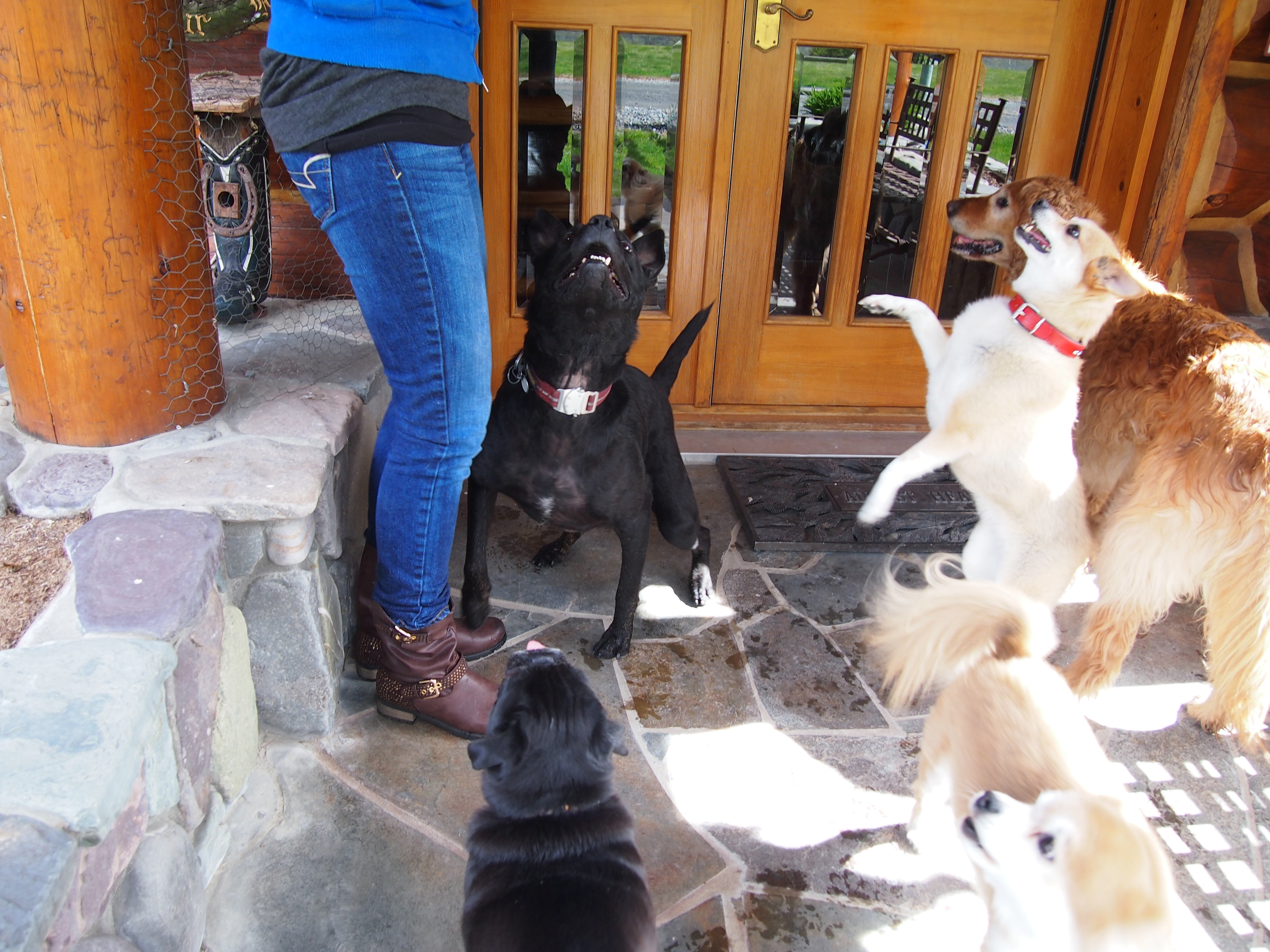Your dog’s perfect, right? Perfect for you, that is. But there are probably a few things your dog does that you’d really rather hide from people who visit your house.
Here are 7 things I sure don’t want our pack to do when company shows up:
1. Jump up. This can be annoying, even to a pet lover, but dangerous to someone who is young, elderly or unstable on their feet. Besides, paws belong on the ground, not on someone’s clothes.

2. Lift his leg. People don’t look like trees, signs, or fire hydrants, but they are vertical surfaces and they can have the smell of other pets on them.
In almost 60-years as a pet lover and 35-years as a practicing veterinarian I’ve seen a dog cock his leg and pull the trigger about a dozen times. Yes, it can make a viral YouTube video, but is disgusting for the recipient. If your dog starts sniffing and showing the same signs it does when it checks his pee-mail, call him away before he leaves a message of his own.
3. Go straight for the crotch. Doggie manners are distinctly different from human manners, and for canines, sniffing the nether-regions is acceptable for greeting As such, dogs often zoom in for the mid-section like they’re caught in an invisible tractor beam. Solution? Ask your dog to do a sit before greeting a friend or stranger who isn’t ready to go to third base on the first hello.
4. Show aggression. We love dogs whose ears are up, tails are wagging, and feet are doing a happy dance as they approach. We fear dogs who come near with hair erect and ears flat. Worse yet if they have teeth bared, are growling or lunging.
Even dogs who appear timid or anxious can fear-bite. It’s very important, if you have a dog who can be aggressive or fear-bite, to keep them away from strangers, warn others not to directly approach, or even use a muzzle to prevent a bite. If you’re the one who’s being approached by a dog whose body language or intent you question, stand still, avoid eye contact, and don’t reach toward the dog. For all aggression, professional help starting with your veterinarian working with a positive reinforcement trainer is warranted.
5. Shy away. Trepidation during greeting may mean your dog hides you, is hesitant to approach, or ducks when reached for. Fearful behavior can progress into aggression. That’s why a dog’s confidence level during greetings needs to be addressed. Instruct visitors to ignore the dog and to not attempt to pet until the dog makes the first contact and seeks petting. Deliver your dog treats or other rewards during greetings to build their positive association with new people.
6. Yap. A yappy or boisterous dog can up the stress of greetings. Barking can stem from numerous causes, including excitement and attention-seeking. Find the root cause for your dog’s barking, seeking professional help if needed, to change the baseline emotion during greeting and direct their behavior to more appropriate responses, like asking for a “watch me” or asking for quiet on cue.
7. Teeth for two. Puppies learn to explore the world and interact using their teeth. Sometimes the puppy never learns to discontinue the use of their teeth during interactions with people, and the mouthy behavior continues into adulthood, especially when excited.
Train an alternative behavior during greetings, such as rewarding the dog while she remains in a down. Or, for a dog who seems comforted when holding something in their mouth, give a toy or ball for her to hold when she meets someone at the door or out on walks.
What does your dog do when meeting people that you’d really rather he didn’t?

